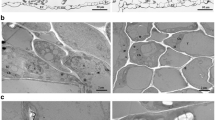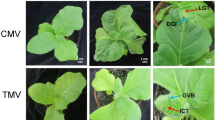Abstract
Small RNAs (sRNAs) play important roles in all stages of plant growth and development. Several classes of sRNAs have been described; the best-described classes are referred to as microRNAs (miRNAs) and small interfering RNAs (siRNAs). miRNAs are small endogenous RNAs that regulate gene expression by mainly targeting the transcription factors in plants and animals. miRNAs are involved in a variety of activities, including plant development, signal transduction, protein degradation, response to environmental stress, and pathogen invasion. Virus infection is one of the biotic stresses, which plant face very frequently. Tomato leaf curl New Delhi viruses (ToLCNDVs) are single standard DNA viruses belong to the family Geminirividae. It infects tomato plants worldwide causing leaf curling, and is responsible for heavy economic losses to tomato production. Two strains of ToLCNDV exist in nature, one showing severe leaf curling symptom and another showing mild symptom after infection. To understand this difference, we analyzed miRNA expression levels using microarray. Expression levels of fourteen miRNAs were found to be differentially regulated in the plants inoculated with severe and mild strain of ToLCNDV. Among them, eleven miRNAs are involved in organ development, hormone signaling and defense responses through their targets. Four constitutive differentially regulated miRNAs (miR-160, 164, 167 and 390) through their targets (viz. ARF8, NAC, ARF3 and MAPK, respectively) control leaf development. Stress responsive miR-403, through its target AGO2, regulates RNAi-mediated defense response. In the present study, we discuss the possible interference of viral proteins in plant development process through the miRNAs.



Similar content being viewed by others

References
Barkoulas, M., Galinha, C., Grigg, S. P., & Tsiantis, M. (2007). From genes to shape: Regulatory interactions in leaf development. Current Opinion in Plant Biology, 10, 660–666.
Bartel, D. P. (2004). MicroRNAs: Genomics, biogenesis, mechanism, and function. Cell, 116, 281–297.
Bazzini, A. A., Asurmendi, S., Hopp, H. E., & Beachy, R. N. (2006). Tobacco mosaic virus (TMV) and potato virus X(PVX) coat proteins confer heterologous interference to PVX and TMV infection, respectively. The Journal of General Virology, 87, 1005–1012.
Bazzini, A. A., Hopp, H. E., & Beachy, R. N. (2007). Infection and co-accumulation of Tobacco mosaic virus proteins alter microRNA levels, correlating with symptom and plant development. Proceedings of the National Academy of Science USA, 104, 12157–12162.
Chakraborty, S. (2008). Tomato leaf curl viruses from India (Geminiviridae). In B. W. J. Mahy & M. H. V. van Regenmortel (Eds.), Enciclopedy of virology (pp. 124–133). Amsterdam: Elsevier.
Chapman, E. J., Prokhnevsky, A. I., Gopinath, K., Dolja, V. V., & Carrington, J. C. (2004). Viral RNA silencing suppressors inhibit the microRNA pathway at an intermediate step. Genes and Development, 18, 1179–1186.
Damodharan, S., Zhao, D., & Arazi, T. (2016). A common miRNA160-based mechanism regulates ovary patterning, floral organ abscission and lamina outgrowth in tomato. Plant Journal, 86, 458–471.
Diermann, N., Matoušek, J., Junge, M., Riesner, D., & Steger, G. (2010). Characterization of plant miRNAs and small RNAs derived from potato spindle tuber viroid (PSTVd) in infected tomato. Biological Chemistry, 391, 1379–1390.
Dunoyer, P., Lecellier, C. H., Parizotto, E. A., Himber, C., & Voinnet, O. (2004). Probing the microRNA and small interfering RNA pathways with virus-encoded suppressors of RNA silencing. The Plant Cell, 16, 1235–1250.
Etessami, P., Saunders, K., Watts, I., & Stanley, J. (1991). Mutational analysis of complementary-sense genes of African cassava mosaic virus DNA A. Journal of General Virology, 72, 1005–1012.
Finnegan, E. J., & Matzke, M. A. (2003). The small RNA world. Journal of Cell Science, 116, 4689–4693.
Guilfoyle, T. J., Ulmasov, T., & Hagen, G. (1998). The ARF family of transcription factors and their role in plant hormone-responsive transcription. Cellular and Molecular Life Science, 54, 619–627.
Guo, H. S., Xie, Q., Fei, J. F., & Chua, N. H. (2005). Micro RNA directs mRNA cleavage of the transcription factor NAC1 to down-regulate auxin signals for Arabidopsis lateral root development. Plant Cell, 17, 1376–1386. https://doi.org/10.1105/tpc.105.030841.
Hussain, M., Mansoor, S., Iram, S., Zafar, Y., & Briddon, R. W. (2004). First report of tomato leaf curl New Delhi virus affecting chilli pepper in Pakistan. Plant Pathology, 53, 794.
Jagger, J. W. H., Lewsey, M. G., Patel, K., Westwood, J., Heimstädt, S., Carr, J. P., et al. (2011). An antiviral defense role of AGO2 in plants. PLoS ONE, 6, e14639.
Jay, F., Wang, Y., Yu, A., Taconnat, L., Pelletier, S., & Colot, V. (2011). Misregulation of AUXIN RESPONSE FACTOR 8 underlies the developmental abnormalities caused by three distinct viral silencing suppressors in Arabidopsis. PLoS Pathogens, 7, e1002035.
Jones-Rhoades, M. W., Bartel, D. P., & Bartel, B. (2006). MicroRNAs and their regulatory roles in plants. Annual Reviews of Plant Biology, 57, 19–53.
Kasschau, K. D., Xie, Z., Allen, E., Llave, C., Chapman, E. J., Krizan, K. A., et al. (2003). P1/HC-Pro, a viral suppressor of RNA silencing, interferes with Arabidopsis development and miRNA function. Developmental Cell, 4, 205–217.
Kim, S. G., Kim, S. Y., & Park, C. M. (2007). A membrane-associated NAC transcription factor regulates salt-responsive flowering via FLOWERING LOCUS T in Arabidopsis. Planta, 226, 647–654.
Kohli, D., Joshi, G., Deokar, A. A., Bhardwaj, A. R., Agarwal, M., Agarwal, S. K., et al. (2014). Identification and characterization of Wilt and salt stress-responsive MicroRNAs in chickpea through high-throughput sequencing. PLoS ONE, 9(10), e108851. https://doi.org/10.1371/journal.pone.0108851.
Koundal, V., & Praveen, S. (2010). MicroRNA-based RNA interference vector for gene silencing in plants. Journal of Plant Biochemistry and Biotechnology, 19(1), 79–82.
Kumar, V., & Naqvi, A. R. (2016). Tomato leaf curl New Delhi virus (ToLCNDV) encoded AC2 associates with host miRNAs by directly interacting with AGO1. Journal of RNA and Genetics, 12, 515–520.
Machida, C., Nakagawa, A., Kojima, S., Takahashi, H., & Machida, Y. (2015). The complex of ASYMMETRIC LEAVES (AS) proteins plays a central role in antagonistic interactions of genes for leaf polarity specification in Arabidopsis. Wiley Interdisciplinary Reviews Developmental Biology, 4, 655–671.
Navarro, L., Dunoyer, P., Jay, F., Arnold, B., Dharmasiri, N., Estelle, M., et al. (2006). A plant miRNA contributes to antibacterial resistance by repressing auxin signaling. Science, 312, 436–439.
Padidam, M., Beachy, R. N., & Fauquet, C. M. (1995). Tomato leaf curl geminivirus from India has a bipartite genome and coat protein is not essential for infectivity. Journal of General Virology, 76, 25–35.
Palukaitis, P., & MacFarlane, S. (2006). Viral counter-defense molecules. In G. Loebenstein & J. P. Carr (Eds.), Natural resistance mechanisms of plants to viruses. Dordrecht: Springer.
Pratap, D., Kashikar, A., & Mukherjee, S. (2011). Molecular characterization and infectivity of a Tomato leaf curl New Delhi virus variant associated with newly emerging yellow mosaic disease of eggplant in India. Virology Journal, 8, 305.
Qu, F., & Morris, T. J. (2005). Suppressors of RNA silencing encoded by plant viruses and their role in viral infections. FEBS Letters, 579, 5958–5964.
Ramesh, S. V., Ratnaparkhe, M. B., Kumawat, G., Gupta, G. K., & Husain, S. M. (2014). Plant miRNAome and antiviral resistance: A retrospective view and prospective challenges. Virus Genes, 48, 1–14.
Sarkar, D., Maji, R. M., Dey, S., Sarkar, A., Ghosh, Z., & Kundu, P. (2017). Integrated miRNA and mRNA expression profiling reveals the response regulators of a susceptible tomato cultivar to early blight disease. DNA Research, 24, 235–250.
Schmittgen, T. D., Jiang, J., Liu, Q., & Yang, L. (2004). A high-throughput method to monitor the expression of microRNA precursors. Nucleic Acids Research, 32, e43.
Tian, C. E., Muto, H., Higuchi, K., Matamura, T., Tatematsu, K., Koshiba, T., et al. (2004). Disruption and overexpression of auxin response factor 8 gene of Arabidopsis affect hypocotyl elongation and root growth habit, indicating its possible involvement in auxin homeostasis in light condition. The Plant Journal, 40, 333–343.
Usharani, K. S., Surendranath, B., Paul-Khurana, S. M., Garg, I. D., & Malathi, V. G. (2004). Potato leaf curl—A new disease of potato in northern India caused by a strain of Tomato leaf curl New Delhi virus. Plant Pathology, 53, 235.
Voinnet, O. (2005). Induction and suppression of RNA silencing: insights from viral infections. Nature Reviews Genetics, 6, 206–220.
Zaitlin, M., & Hul, R. (1987). Plant virus host interaction. Annual Reviews of Plant Physiology, 38, 291–315.
Zhou, X., Zhu, Q., Eicken, C., Sheng, N., Zhang, X., Yang, L., et al. (2012). MicroRNA profiling using μParaflo microfluidic array technology. Methods in Molecular Biology, 822, 153–182.
Author information
Authors and Affiliations
Corresponding author
Electronic supplementary material
Below is the link to the electronic supplementary material.
Rights and permissions
About this article
Cite this article
Kumar, G., Singh, A., Vinutha, T. et al. Possible role of miRNAs and their targets, in modulating leaf morphology and plant growth during leaf curl virus infection in tomato. Ind J Plant Physiol. 22, 608–615 (2017). https://doi.org/10.1007/s40502-017-0345-5
Received:
Accepted:
Published:
Issue Date:
DOI: https://doi.org/10.1007/s40502-017-0345-5



